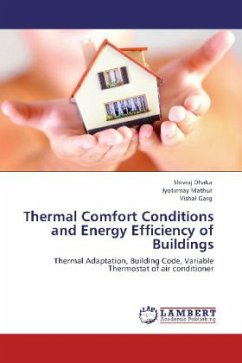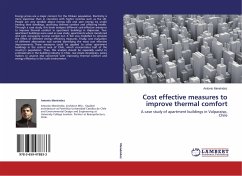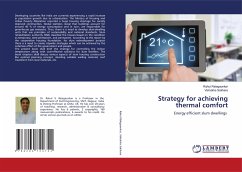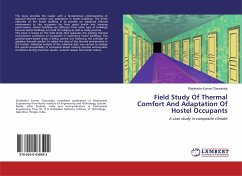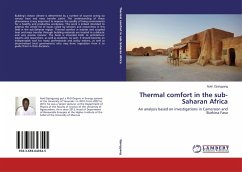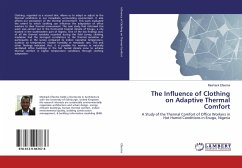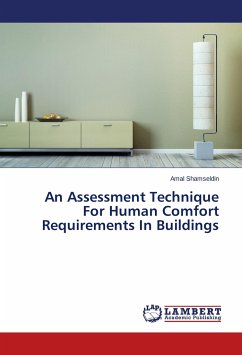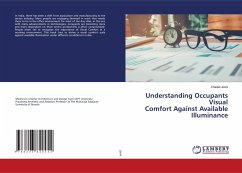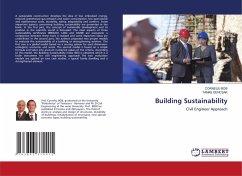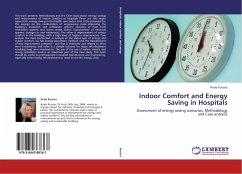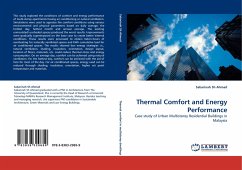
Thermal Comfort and Energy Performance
Case study of Urban Multistorey Residential Buildings in Malaysia
Versandkostenfrei!
Versandfertig in 6-10 Tagen
52,99 €
inkl. MwSt.

PAYBACK Punkte
26 °P sammeln!
This study explored the conditions of comfort and energy performance of multi-storey apartments having air conditioning or natural ventilation. Simulations were used to appraise the comfort conditions using various environmental and physical parameters based on daily average, the hottest day, hottest month and annual average. The existing uninsulated/ unshaded spaces produced the worst results. Improvements were gradually superimposed on the base case to create better internal conditions. These results were processed to obtain Kelvin-hours of overheating for naturally ventilated spaces and kWh...
This study explored the conditions of comfort and energy performance of multi-storey apartments having air conditioning or natural ventilation. Simulations were used to appraise the comfort conditions using various environmental and physical parameters based on daily average, the hottest day, hottest month and annual average. The existing uninsulated/ unshaded spaces produced the worst results. Improvements were gradually superimposed on the base case to create better internal conditions. These results were processed to obtain Kelvin-hours of overheating for naturally ventilated spaces and kWh cumulative load for air conditioned spaces. The results showed low energy strategies i.e., natural ventilation, shading, insulation, orientation, design layout, location of floors, materials, etc. could reduce thermal stress and energy consumption. On an average day, comfort can be achieved using natural ventilation. For the hottest day, comfort can be achieved with the aid of fans for mostof the day. For air conditioned spaces, energy used can be reduced through shading, insulation, orientation, higher set point temperature and materials.



